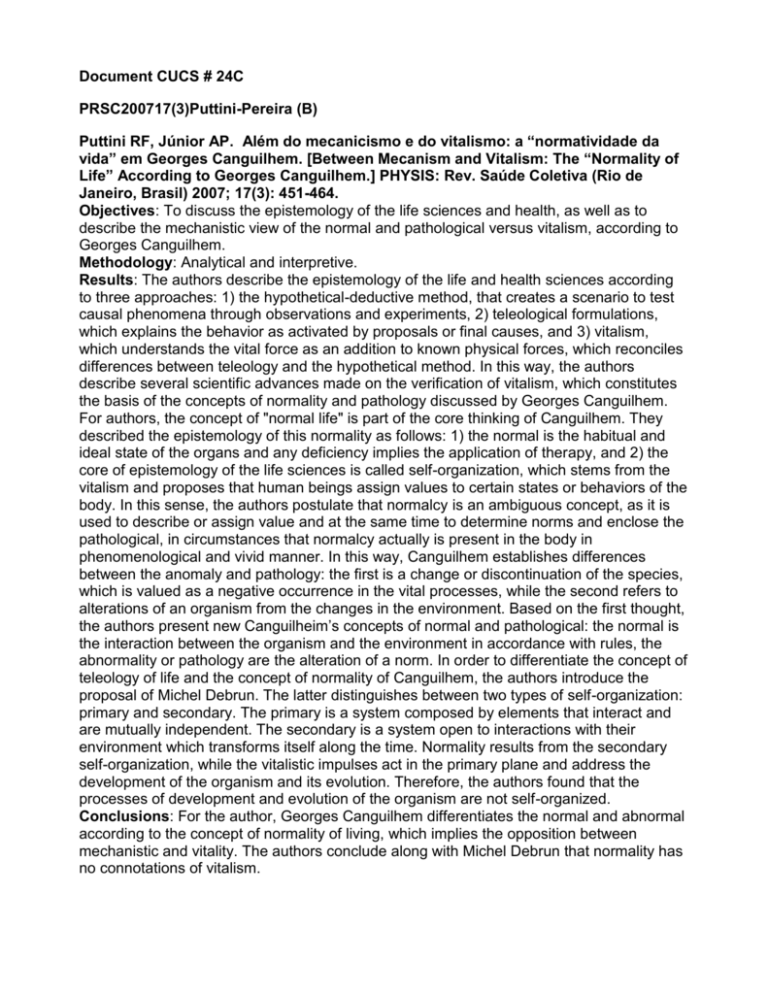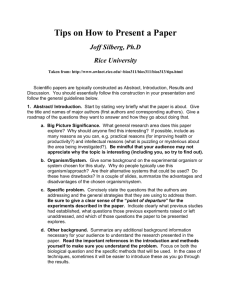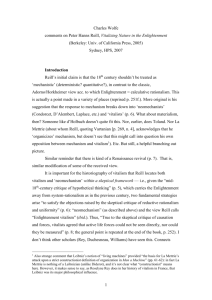Doc CUCS 24C EV
advertisement

Document CUCS # 24C PRSC200717(3)Puttini-Pereira (B) Puttini RF, Júnior AP. Além do mecanicismo e do vitalismo: a “normatividade da vida” em Georges Canguilhem. [Between Mecanism and Vitalism: The “Normality of Life” According to Georges Canguilhem.] PHYSIS: Rev. Saúde Coletiva (Rio de Janeiro, Brasil) 2007; 17(3): 451-464. Objectives: To discuss the epistemology of the life sciences and health, as well as to describe the mechanistic view of the normal and pathological versus vitalism, according to Georges Canguilhem. Methodology: Analytical and interpretive. Results: The authors describe the epistemology of the life and health sciences according to three approaches: 1) the hypothetical-deductive method, that creates a scenario to test causal phenomena through observations and experiments, 2) teleological formulations, which explains the behavior as activated by proposals or final causes, and 3) vitalism, which understands the vital force as an addition to known physical forces, which reconciles differences between teleology and the hypothetical method. In this way, the authors describe several scientific advances made on the verification of vitalism, which constitutes the basis of the concepts of normality and pathology discussed by Georges Canguilhem. For authors, the concept of "normal life" is part of the core thinking of Canguilhem. They described the epistemology of this normality as follows: 1) the normal is the habitual and ideal state of the organs and any deficiency implies the application of therapy, and 2) the core of epistemology of the life sciences is called self-organization, which stems from the vitalism and proposes that human beings assign values to certain states or behaviors of the body. In this sense, the authors postulate that normalcy is an ambiguous concept, as it is used to describe or assign value and at the same time to determine norms and enclose the pathological, in circumstances that normalcy actually is present in the body in phenomenological and vivid manner. In this way, Canguilhem establishes differences between the anomaly and pathology: the first is a change or discontinuation of the species, which is valued as a negative occurrence in the vital processes, while the second refers to alterations of an organism from the changes in the environment. Based on the first thought, the authors present new Canguilheim’s concepts of normal and pathological: the normal is the interaction between the organism and the environment in accordance with rules, the abnormality or pathology are the alteration of a norm. In order to differentiate the concept of teleology of life and the concept of normality of Canguilhem, the authors introduce the proposal of Michel Debrun. The latter distinguishes between two types of self-organization: primary and secondary. The primary is a system composed by elements that interact and are mutually independent. The secondary is a system open to interactions with their environment which transforms itself along the time. Normality results from the secondary self-organization, while the vitalistic impulses act in the primary plane and address the development of the organism and its evolution. Therefore, the authors found that the processes of development and evolution of the organism are not self-organized. Conclusions: For the author, Georges Canguilhem differentiates the normal and abnormal according to the concept of normality of living, which implies the opposition between mechanistic and vitality. The authors conclude along with Michel Debrun that normality has no connotations of vitalism.








